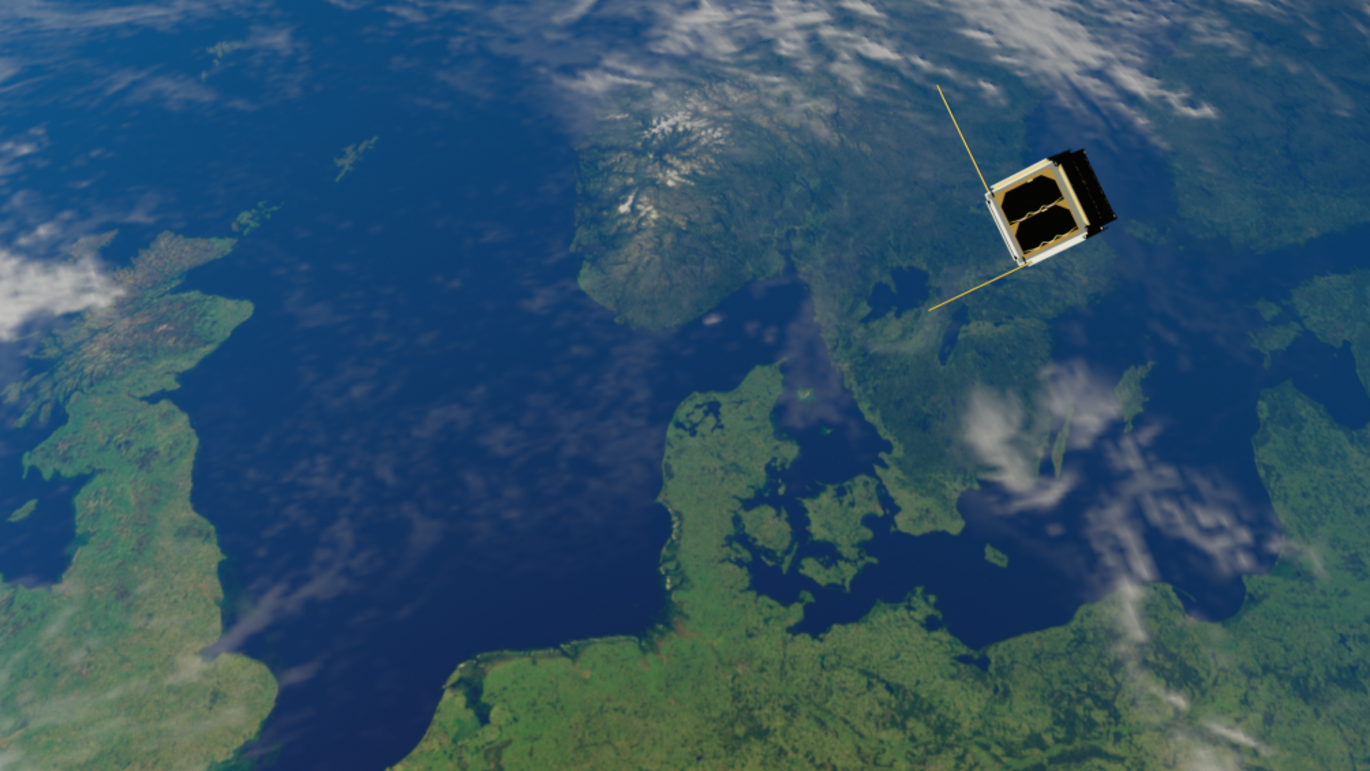Follow the action minute-by-minute: Danish students send satellite into space
Danish space history will be written when the first satellite in the DISCO student satellite programme is sent into space. The DISCO programme is a collaboration between four universities. The satellite contains a microcomputer and, among other things, it will test artificial intelligence in space. Help give the satellite a good send off on Saturday 15 April when Aarhus University (AU) and the University of Southern Denmark (SDU) transmit the launch live.

Over the past two years, students from Aarhus University, the University of Southern Denmark, Aalborg University and the IT University have been getting the first DISCO satellite ready for launch – and now it is happening. On Saturday 15 April, all their work and excitement will culminate when the satellite is launched with a Falcon 9 rocket from the Vandenberg Space Force Base in the USA at 08:47 Danish time.
AU and SDU are live streaming the start of the satellite’s journey, and they invite the media and anyone else to join in. There will be unique live images, and in Aarhus there will be an opportunity to meet the students and researchers behind the project.
"The launch is a new chapter in Danish space history. This is the first time that students from four Danish universities are collaborating on an innovative national space programme," says Christoffer Karoff, who is in charge of the project and an associate professor at the Department of Geoscience and Department of Physics and Astronomy at Aarhus University.
Forerunner for a larger climate satellite
The CubeSat satellite measures 10 x 10 x 10 cm and weighs approx. 1 kg. The satellite is carrying a microcomputer developed by Google to generate artificial intelligence. This will be the microcomputer’s first trip into space.
DISCO-1 is a forerunner to test the technology prior to the later DISCO-2 climate satellite, which will be launched next summer. DISCO-2 will teach us more about climate change by taking multi-dimensional images of how glaciers melt in Greenland.
Trains the talents of the future for the space sector
Nikolaj Forskov Eriksen is one of the students who installed the satellite in the rocket in the US, and he has gained a lot from the project.
"DISCO is an obvious reason to get excited about your subject. You can test your skills in a real task in which your decisions have real consequences. DISCO has also helped to get me a work placement in a company I’d already been in contact with during the project. And it's just great fun to share a project with students from different degree programmes and universities," says Nikolaj Forskov Eriksen, who is studying electro-engineering at the University of Southern Denmark.
In the long term, Associate Professor Christoffer Karoff hopes that the project can help to provide qualified candidates for the space sector, which is short of qualified experts.
"The Danish space sector is booming, and in a few years former DISCO students will be taking over the reins for the sector," he says.
He also hopes that DISCO can help generate even more interest from upper secondary school students, who will be able to try their hand at communicating with the satellite.
DISCO-1 will pass Denmark twice every 24 hours and is planned to be in orbit for approx. three years.
The satellite programme is being funded by the Danish Industry Foundation in collaboration with Space Inventor, while Momentus and SpaceX are responsible for the launch.
NOTE: There may be changes in the time and programme. Keep updated on the websites below.
AU programme: https://geo.au.dk/profil/aktuelt/arrangementer/artikel/artikel/opsendelsesfest-for-disco-1
Read more about DISCO here: https://discosat.dk/
Read the press release (in Danish): https://via.ritzau.dk/pressemeddelelse/folg-med-minut-for-minut-danske-studerende-sender-satellit-i-rummet-nb-opsendelsen-udsat-til-onsdag?publisherId=13559835&releaseId=13676621&lang=da
